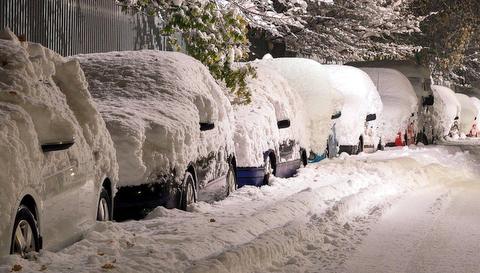6 More Weeks of Winter Will Hit Your Utility Bill Hard

As Groundhog Day is here, we’ll be speculating on whether or not we will see six more weeks of winter. New insights from SolarReviews.com have identified what that could mean for electric bills across the country—and the biggest is increased pricing!
The data analyzed by SolarReviews included historical Groundhog Day records which show about a 65% chance of Punxsutawney Phil seeing his shadow. We also referenced generation by energy resources, average electricity rates and bills, including energy consumption. Only datasets from official records were included in the analysis.
Here is what 6 more weeks of winter could do to your energy bill:
- Electricity rate increases
Punxsutawney Phil saw his shadow 11 times between 2007 and 2023. During those years, average electricity prices were over 5% higher than in the ones when he predicted an early spring.
- Increased utility bill spending by 4.6%
In February, residential consumers are likely to spend $4.93 more on their electric bill in years where Phil sees his shadow.
- Higher energy consumption for heating
While the average temperatures in February and March between 2007 and 2023 are relatively flat, data shows that there are slightly cooler temperatures associated with years in which Punxsutawney Phil sees his shadow.

Ways consumers can save on energy bills during years of long winter
- Purchase energy-saving winter items
Electricity bills are undoubtedly the most expensive during the coldest and hottest months of the year, as heating and cooling costs take up such a large portion of the bill.
You can purchase items such as a heated blanket, humidifier, or insulated curtains to have in your home to keep warm and avoid touching the thermostat as often.
- Insulate your home
A great way to prepare your home for winter is making sure it’s properly insulated. Weatherstripping doors and caulking windows are a simple cost effective way to keep cold air out and avoid turning up the thermostat.
- Unplug electronics whenever possible
Electronics plugged into power outlets in your home can still draw small amounts of power, even when the device is turned off. These are known as phantom loads and can account for up to 10% of your home’s electric usage.
Get in the habit of unplugging electronics during the winter when they’re not in use, or purchase smart power strips that can automatically power down devices.
“A prolonged winter is just as bad as a heat wave in the summer. You have to be willing to integrate energy-saving hacks into your daily routine. The best thing to keep in mind is that no matter how frivolous it seems, no savings are too small. Things add up, and it’s fine to make any changes where you can.”

1 thought on “It’s Groundhog Day: Do You Know Where Your Electricity Rates Are Going?”